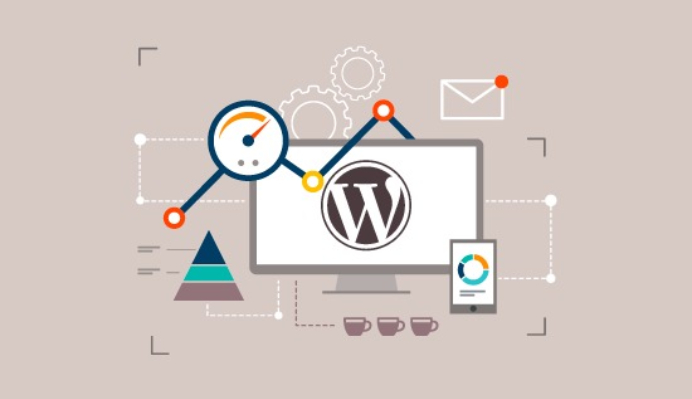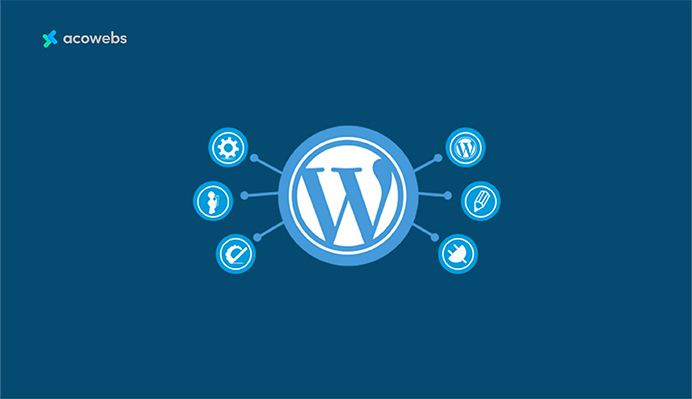Table of Contents
As the end of 2024 approaches, it’s only natural to ask what lies ahead for WordPress – as compared with all other content management systems in use today. In the following article, we will examine the proposed WordPress roadmap for 2024 and discuss the major releases planned during that year, new features in store and the wider significance of those plans on WordPress community as well. Get ready to find out what you can expect from the WordPress in 2024 and prepare your site as well as the business for some great changes coming up.
Three Major Releases
A significant highlight of the WordPress roadmap for 2024 is the plan for three major releases: While the dates for these releases are subject to change, they provide a rough timeline for the new features and improvements that will be introduced throughout the year.
1. WordPress 6.5 (March 26)
Scheduled to launch in March 2024, WordPress version 6.5 will feature a suite of enhancements designed specifically for both the users and developers that refine the experience of using WordPress altogether. However, speed is still one of the primary aims, and built-in translations help to make it faster loading times especially for multilingual sites. We may see additional tweaks under the hood to further optimize overall site performance.
Customization abilities are also set to expand, empowering users to make WordPress their own more easily. A native font library paves the way for more typography options, while the introduction of “colourways” will enable effortless colour scheme adjustments. For designers less keen on block themes, patterns arrive for classic themes, promising added stylistic flexibility.
On the collaboration front, enhanced tools look to build upon Phase 3 of the evolving Gutenberg project, working toward a more cooperative and user-friendly content creation environment.
Additional developer-focused features may also emerge, like data views for improved data display within blocks, more robust revision history capabilities, and key API enhancements around interactivity, custom fields/blocks, and more.
Stay tuned for more details on these and other additions as WordPress 6.5 nears release. The update presents a promising package, elevating WordPress sites in terms of speed, custom styling, collaborative publishing, and programming abilities.
2. WordPress 6.6 (July 16)
Set for the July 16, 2024 launch, WordPress version is a stabilization and polish release aimed at improving the performance quality by eliminating bugs while increasing the overall user experience.
In comparison to the more bells-and-whistle releases (6.5 and 6.7) that preceded it, therefore is not likely going to bring significant new functionality enhancements to the table platform Instead, the core development team is dedicating this version to “maintenance and general polish,” as the official roadmap describes.
Users and developers can expect a faster, smoother, and more reliable WordPress as a result of the refined codebase. Fixes to existing functionality will also improve stability and consistency across the CMS.
While the current plan is to forgo significant feature development, there has been some discussion about potentially shifting the focus. This could allow some initial collaboration tools, slated for 6.5, to slip into the 6.6 timeline instead.
However, for now, it’s best to anticipate 6.6 as a purely optimization-centric update for WordPress. The focus is on enhancing what already exists rather than building something new.
Regardless of whether extra features make it in, 6.6 represents a valuable opportunity to upgrade sites to a polished version of WordPress before the more ambitious changes proposed for 6.7. For those managing or developing on the platform, it’s a chance to move to something more stable and reliable before continuing to build.
So, while not the most exciting entry in the roadmap, 6.6 promises to improve quality across the board for WordPress sites. For users, that means a smoother experience. For developers, an easier-to-work-with foundation. And for the web as a whole, a more solid and well-vetted core content management system.
3. WordPress 6.7 (November 5)
The upcoming WordPress 6.7 release promises continued enhancements aimed at improving the user experience, security, performance and extensibility of the world’s most popular content management system.
Building on advancements introduced in version 6.6, the block editor is likely to see further refinements focused on streamlining workflow, collaboration and design flexibility for content creators. Code and resource optimization will also be an area of focus, with improvements aimed at boosting site speed and stability.
Staying true to WordPress’ commitment to security, developers will continue hardening core code against vulnerabilities as well as introducing updated authentication mechanisms and user management tools.
Finally, this release is set to bring additions and improvements to the WordPress REST API, enhancing integration capabilities and flexibility for developers looking to build innovative custom solutions, themes and plugins to power diverse web projects.
Entering the Third Stage of the Gutenberg Project

In 2024, the Gutenberg project enters an exciting new phase focused on enhancing collaboration and streamlining teamwork in WordPress. Phase 3 introduces real-time co-editing capabilities that allow multiple content creators and developers to simultaneously access and edit the same documents, websites, and custom themes.
Users can now work together in real-time, accelerating workflows. The new features facilitate leaving commentary, feedback, and reviewing changes with colleagues and clients right within the editing experience. Teams can brainstorm ideas, outline content, write posts, and tweak website designs side-by-side, enabling greater efficiency, transparency and alignment.
This shift to lightweight, in-platform collaboration tools aims to reduce reliance on separate review and feedback cycles that can hamper productivity. Instead, Gutenberg looks to unite the stages of content creation and web development, allowing cooperative workflows that mirror modern, agile work environments. With Phase 3, WordPress continues its innovation lead in how diverse teams access, edit, and publish web content and customizations.
Features and Improvements to Expect
While the roadmap provides a general outline of what to expect from WordPress in 2024, it’s essential to explore the specific features and improvements that will enhance the platform’s functionality and user experience. Here are some key areas to look out for:

1. Typography Management
With the 6.5 release, WordPress will introduce built-in typography management tools. Site owners and developers will have access to an extensive font library from which they can choose typefaces to brand and style their sites. The inclusion of these diverse font options will enable deeper personalization and customization of site designs. Additionally, developers will have the ability to build plugins that inject new fonts into the library, vastly expanding typographic possibilities for original and creative applications.
2. Real-Time Collaboration
Phase 3 of the groundbreaking Gutenberg project promises to equip WordPress with real-time collaboration capabilities. Site contributors will finally be able to simultaneously work on the same document—Whether planning a new site architecture, developing a post, or managing menus—together in real time. The addition of functionalities like live editing, commenting, and centralized feedback will drastically smooth out team workflows and content creation processes. Groups will work in closer unity regardless of location or time.
3. Publishing Workflows
To optimize the entire publishing process from start to finish, WordPress is gearing up to introduce robust publishing workflows. Once implemented, users will have the tools to construct advanced publishing logic around their content production and distribution pipelines. For example, site managers could require that all posts include imagery, customized excerpts,
or categories, and reviewer sign-offs before going live. These publish-time rules will inject integrity and organization into publishing endeavours of all sizes.
4. Enhanced Post Revisions
The upcoming post-revision engine will provide an entirely new level of editing and version control flexibility. Users will gain the ability to roll back changes on a highly granular level—With precision down to individual blocks and components. Writers, editors, and site managers could update multiple sections of an article simultaneously while still preserving important pieces requiring additional rework. Unlike anything WordPress has offered to date, these augmented revision tracking capabilities will simplify editorial processes across the CMS.
5. Updated Media and Asset Library
In 2024, WordPress will completely reimagine the media experience with tools for organizing, discovering, manipulating, and attributing media files. The upcoming media library will allow for tagging and grouping assets based on factors like file formats, creation dates, and licensing rights. Advanced search and filtering functions will enable quick access to files. Additionally, the new editing interface will provide intuitive controls over image cropping, colour correction, and metadata. By introducing these enhancements, WordPress aims to help publishers wrangle diverse media repositories and efficiently edit images all from within the CMS dashboard itself.
6. Search and Command Prompt
Picking up on the latest trends in software user experience (UX) design, WordPress plans to bake prompt-based search and command functionalities directly into its core platform. This addition will allow users to quickly pull up files, settings, and content or execute custom actions through a simple text-based interface within WordPress. With faster access to key controls and information via prompt queries, users can forego traditional menu clicks and realize huge time savings. These intelligent prompt capabilities promise to streamline workflows and heighten productivity across the board.
7. Community Input
True to its open-source and community-centric roots, WordPress actively solicits feedback and feature requests from its diverse global user base during platform development cycles. In shaping phase 3 of the ambitious Gutenberg project, WordPress has placed extra emphasis on gathering insights from everyday users, subject matter experts, and industry partners.
Certain functionality desires have risen to the top. Groups have voiced strong interest in multi-tiered collaboration workflows allowing both broad and restricted access, shareable public preview links for gathering feedback prior to formal publishing, deep integrations with popular team communication tools like Slack and Trello, and more granular tracking of changes extending beyond written content to other site components.
The Road to 2024
Although the proposed roadmap for WordPress in 2024 offers some insight into what is coming, it really needs to be noted that plans sometimes change. There are usually unexpected roadblocks and delays to such a massive project as WordPress development. If you are working with a roadmap, it is important to keep in mind that the timeline and features may change throughout the year.
Even though there is room for some adjustments, the road ahead seems interesting and encouraging. In 2024, changes are taking place for WordPress surrounding collaboration, customization and user experience. The goal of the platform is to compete in today’s dynamic environment of web development and offer its users all the necessary tools for developing catchy websites.
Being a WordPress user, it is imperative to remain updated and be ready for the changes that are about to come. Pay close attention to the WordPress community for new information, share your thoughts and prepare yourself to embrace all innovations that are scheduled for implementation in 2024.
Conclusion
In the end, WordPress roadmap 2024 gives a glimpse into an exciting ride for the platform and its users. WordPress will continue to develop and adapt in light of the three major releases: collaboration highlights and focus on developing strengths. The new features and enhancements planned for the future include typography management and real-time collaboration that will make working with WordPress a more effective experience.
With the slog towards 2024, we must recall that plans are malleable, while adjustments can be implemented as necessary. Indeed, the commitment of the WordPress community to an outstanding user experience remains unbroken. Therefore, fasten your seat belts and enjoy as the most creative year with WordPress begins.
Acowebs are the developers of the WooCommerce Product Labels let customers include custom product labels or product badges for the WooCommerce products. WooCommerce sales badges plugin provides you with different label styles and customizations for labels. It offers a easy-to-use UI to add labels to the selected products or categories.











 Login
Login
 Cart
Cart








